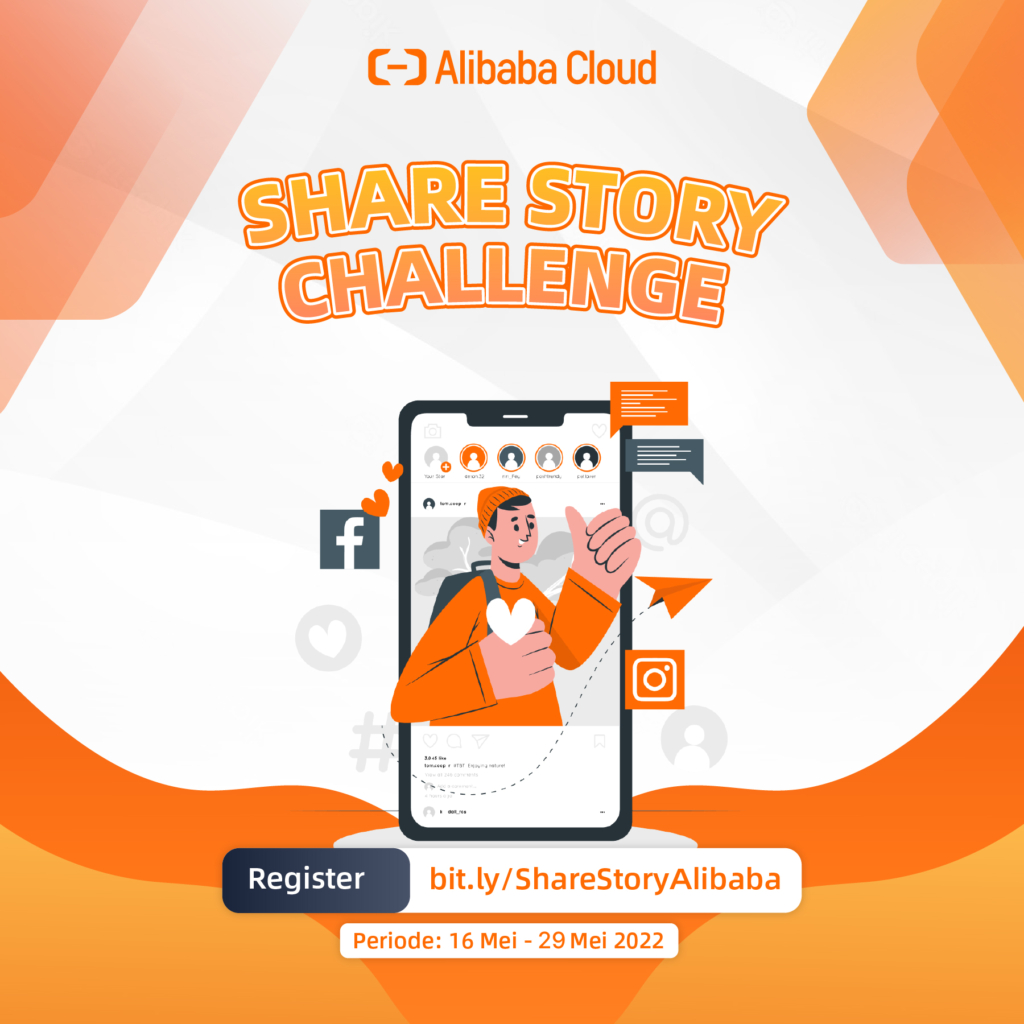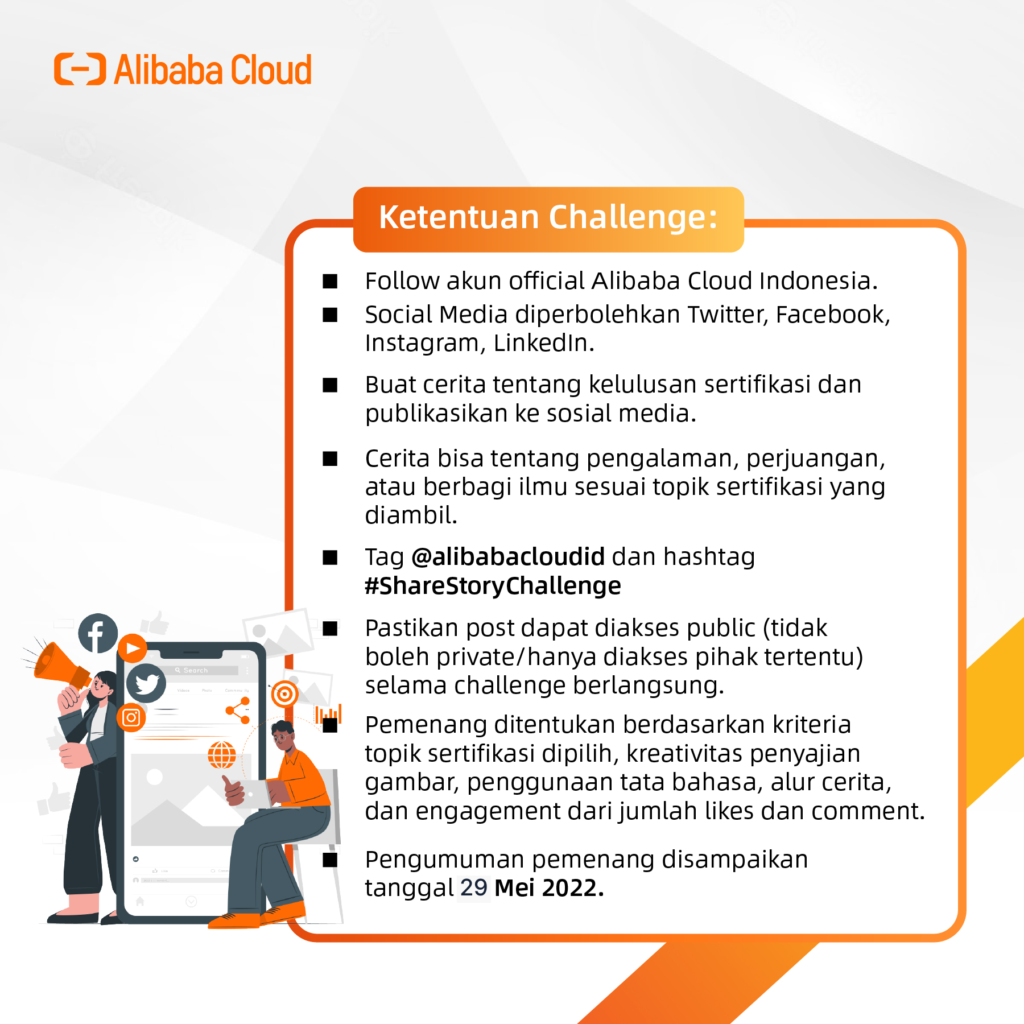Hope you like my story 😀
Sunny Jovita – Binus International University
Introduction
Being a student ambassador means you are willing to take extra responsibilities to be more productive outside your own university’s activities. One day, I found a program from Alibaba Cloud Indonesia (“Alibaba Cloud Indonesia Program Duta Mahasiswa”). It was a student ambassador program, and I applied myself. And then, long story short, you will surely know after reading this, the process was never easy but it’s truly worthwhile! I feel like boosting my self-development so much here.
Chapter 1 – Joining the Alibaba Cloud as a student ambassador
It has been over 3 months since I officially joined Alibaba Cloud Indonesia as a student ambassador. The selection process I have gone through was not quite easy. However, here I am, being genuinely grateful that they chose and trusted me to be one of 20 student ambassadors, across all universities in Indonesia.
In this first month, we were given a full explanation of how the program worked throughout. We were also informed what we would be working on for our first project.
Chapter 2 – 1st project (Promoting Alibaba Cloud’s webinar to universities)
As student ambassadors, we were responsible for promoting Alibaba Cloud events to universities (particularly our own university) to influence students so that they become more familiar with Alibaba Cloud Indonesia (becoming an intern, gaining wider knowledge in Cloud Computing, etc).
For our 1st project, we needed to promote Alibaba Cloud’s webinar with unique link registration. As a result, Finally I managed to gain 542 participants (294 joined the webinar) from 896 people who registered. This webinar benefited me in grasping the essentials of cloud computing, allowing me to broaden my knowledge. Furthermore, Alibaba Cloud provided us with a free test certification.
To gather such a huge number of participants, I collaborated with Binus University to help me advertise the webinar across all of the campuses. I conducted a meeting between my lecturer (Sir Ardimas), Binus Collab division (Sir Dimas), and also my mentor (Ms Laura Valencia) from Alibaba Cloud. Eventually, the collaborated ended up successfully as I expected 😀
Chapter 3 – 2nd project Cloud 101 #ShareStoryChallenge
For our second project, we were supposed to create a campaign (ex: workshop, webinars, competitions) to promote Alibaba Cloud. With my team “Cloud 101”, we were doing a marketing campaign #ShareStoryChallenge where the participants needed to share their story after passing the Alibaba Cloud exams. What’s so special about this campaign? our objective is to introduce Cloud Computing to students who are not familiar with Cloud Computing and Alibaba Cloud Indonesia. So, by taking courses in Alibaba edu platform, you can get incredible Cloud Computing insights and know more about Alibaba Cloud which will be a perfect guide for you to gain new knowledge to meet your own success (Open to everyone, IT and non IT fields).
And as a result, I finally managed to engage 14 people to pass the clouder certificates from 18 participants. Despite the fact that it fell short of expectations, it still paid off because all of my friends won the challenge!
Please kindly check our proposal:
my friends certificates:
Chapter 4 – Webinars
The second webinar, by Ms Tifi Liu, who explained the marketing aspect of Alibaba Cloud, The third webinar Mr Arthur Renaldy provided us a full overview of Cloud Computing.
Thanks to Miss Laura, Stephanie Gao, and Christy Zhou, who organized the first HQ sharing session, offered a thorough explanation regarding their expertise in business operations. The second HQ session, Mr Siddharth Pandey and Jeremy Pedersen spoke about their expertise as solution architects. From those webinars, I learnt about their experience working at Alibaba Cloud, what we need as students to be able to work in this industry, and many values which will help me grow my future career. Despite the fact that many of the webinars were not relevant to my fields (Computer Science), I am grateful to have had the opportunity to gain such essential information.
Last Chapter – Conclusion
June 6, 2022
The journey has finally come to an end!
Take a look on what I managed to achieve for the past 3 months, being one of Alibaba Cloud student ambassador, Here is what I got:
- project 1: managed to gain 542 participants (294 joined the webinar) from 896 people who registered
- project 2: managed to engage 14 people to pass the clouder certificates from 18 participants.
- making blogs: http://sunnyjovita.blog.binusian.org/alibaba-cloud/
- getting published in Binus news website: https://io.binus.ac.id/2022/03/30/binus-university-students-for-the-student-ambassadors-of-alibaba-cloud/
And last but not least, to be chosen as a student ambassador of Alibaba Cloud itself!! (Not gonna lie, this was truly an achievement and a stepping stone for me).
I am deeply thankful to be part of Alibaba Cloud student ambassador, and to be given a chance to grow as who I am today. Being a student ambassador means you are willing to take extra responsibilities to learn much more beyond a formal education. Yea it sounds tough, but trust me, you can clearly see me now all the hard work pays off!
This amazing program matches me the best. So far, we as ambassadors already got so valuable lessons and experiences through projects and webinars that we probably would never gain it from our normal education as a university student. Getting new friends, doing projects together, chatting with the heads, and other knowledge gained from the Alibaba courses.
Once again, I want to thank our dearest mentor, Ms Laura Valencia for this amazing opportunity. Not to mention my teammates, Sundus Nurhasanah, Lenny Raufi Syafitri, Nesri Monika, Juan Patrick, and other amazing new friends I have gathered thanks to the Student Ambassador program.
We get the chance to execute real campaigns and projects, by working individually and also teamwork. It all matters in order to improve our skills better. By this, we become even more dedicated and one step away from being experts!
Last but not least, I hope this story inspires you. Bear in mind that upgrading skills does not always have to go through difficult or complicated ways. You can always start from the simplest thing, such as merely joining online classes, webinars, workshops, and others. From these, I am pretty sure other possibilities that will help you to achieve your goals will open themselves up.
“Instead of blaming the circumstances, the limits that I faced made me have greater effort and have a stronger fighting spirit than everyone else”
Such an amazing experience! Definitely a 10/10









